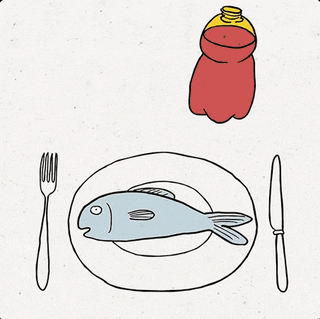
Our morning routine is a personal and profound self-care time for many of us. How we start our day and what we put into and on our bodies can impact how we feel the rest of the day.
So we always opt for products that are healthy for ourselves and the environment the best we can right? Well, what if I were to tell you that some of us may be unknowingly starting our day, every day, ingesting plastic.
You heard me right, microplastics have made their way to daily use items of hygiene, beauty, and even oral care products.
Fun fact: Our mouths are 50 times more absorbent than our skin, so the ingredients in our oral care products truly matter.
That’s why it’s very important as consumers now more than ever to understand and read the ingredients in our products before we buy them.
At Brushd. our products are thoughtfully created with clean ingredients for your oral health. Cruelty-free, plastic-free. But don't just take our word for it, after reading this blog you will know exactly which products and sneaky ingredients to keep an eye out for.
So what are microplastics? How do they affect the environment and our health? And the most unforgiving; how have they managed to trick the masses?
What are microplastics? Why do they seem to be everywhere?

Well, because they are. As we go through our day we can observe in grocery stores, working environments and in restaurants, just how much plastic is all around us. To break it down, literally…. the plastics around us are constantly being broken down into microplastics which are usually smaller than a grain of rice.
So in a nutshell, we unknowingly buy products with microplastic in them including our toothpaste, face washes and makeup.
We then rinse off these products with microplastics which flow straight from the drain into the sewer systems. Wastewater treatment plants don’t filter them out and even worse these plastics cannot biodegrade. Resulting in microplastics filling up our oceans and destroying ecosystems.
Ecosystems are destroyed as sea animals will either absorb or eat the microplastics. As the food chain goes, these plastics lay on the ocean floor being ingested by plankton. Which are eaten by crustaceans, then eaten by fish and ultimately end up back to us.
That’s right, humans eat microplastics while consuming seafood….So whether we think using products aren’t doing much harm, it shows what goes around comes around.

What products are microplastics hiding in?
Microplastics are used in many hygiene and cosmetics products. Some companies deliberately add plastic to their products as fillers instead of natural ingredients to cut costs. They can be found in body scrubs, sun lotions, hair products, lipsticks, bronzers, blushes, toothpastes and pretty much anything that shines and sparks. If the product is glittering, there’s a 9 out of 10 chance it contains microplastics. As appealing as glitter is, you may want to substitute eco-friendly body paint or makeup for your next festival season.
Microplastics created for cosmetic products are called microbeads and are used to create an exfoliating effect in products due to their grain-like consistency. Microbeads are commonly found in items like shower gel, exfoliants, hairspray, sunscreen, make-up, and oral care products.
Microbeads are especially convenient for manufacturers as cheap substitutes rather than natural seeds from fruits that also create the exfoliating effects. So out of all those products listed, which ones do you need to check for microplastics?
How is this even possible?
So how have corporations managed to get away with adding plastic to.. Well.. everything!
As consumers we have a sense of trust in brands and products until… we don’t. Meaning we generally do not think the products we use and consume are out there to harm us because the point of buying products is to benefit us.
That “trust” has been taken advantage of by companies trying to hide ingredients by using names the general public is unfamiliar with. Knowing we will most likely never take the time to research each ingredient listed in every product because it goes back to the trust factor.
Unfortunately, sifting through ingredients may be the solution if you want to steer clear of plastic. But we can make that easier.
Instead of researching the long list of ingredients, let's scroll to see the two words we never want to see listed: polypropylene or polyethylene.
If you see these two ingredients on its label there are microplastics contained in the product. The only way to be sure your products are microplastic-free is by reading the ingredient list.

How to minimize the use of microplastics
It may not be possible to do away with plastic consumption altogether but we can do our best to reduce it, right? Absolutely! Here are some tips:- Stock up on reusable utensils
- Don’t wrap compostable food in plastic bags
- Reuse containers
- Shop at local markets
- Buy plastic free toothbrushes, toothpastes and floss
- Subscribe to eco-friendly brands you trust
- Most importantly, check your labels! Make sure to watch out for polypropylene or polyethylene in your products
